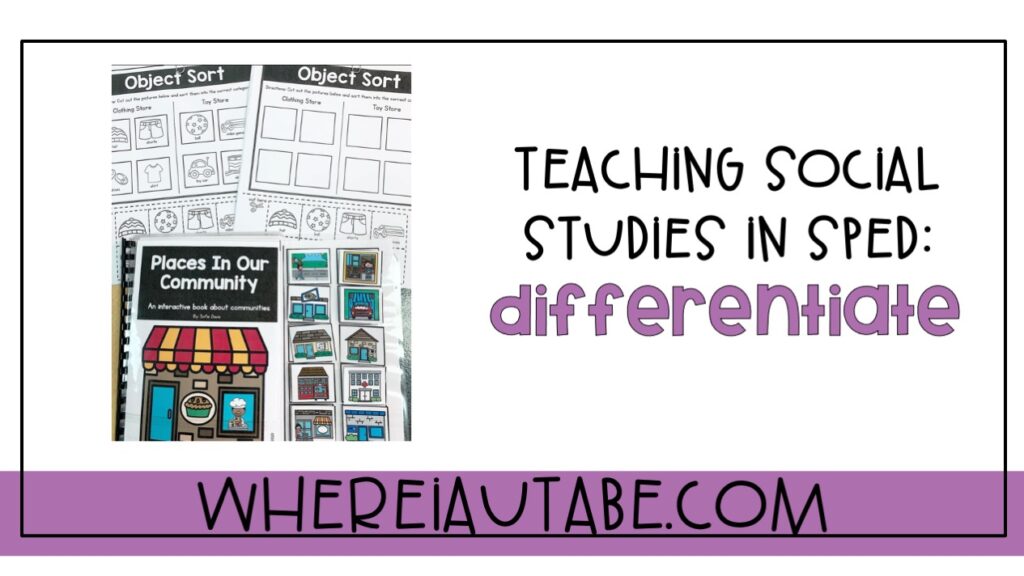Social studies can be one of the most abstract concepts to teach. It’s also rare to be given a special education social studies curriculum. So it can be a challenge to come up with hands-on and engaging social studies activities. Below I’ve listed my best tips on how I keep social studies as engaging as it can be and accessible to all students.

Incorporate real life objects
In order to make abstract concepts more concrete, it’s important to use ways of learning that involve movement. My favorite way to do this is to use props and real life objects. For example, while learning about Earth day, you can bring in recycled objects. No need to buy anything special, just choose a few things from your recycle bin that your students can practice exploring and sorting. The more hands on practice they get, the more meaning it has. Most importantly, the more meaning, the higher chance of generalization.

Offer visual comprehension
Finding a special education social studies curriculum that works for your visual learners can seem like an impossible task. This is why I created my own! I went from piecing together random social studies worksheets that lacked visuals to having an actual leveled and visual curriculum for the entire school year.
Visuals are necessary in all of my student’s work. This is why I typically start any social studies unit with an adapted book. It previews what is about to be taught by having certain vocabulary words paired with pictures. The social studies curriculum I’ve created begins each new unit with an adapted book so it’s a good fit for visual learners.

Differentiate
Chances are that if you’re a special education teacher, you’re teaching several grade levels. Not all of your students will have the same level of understanding or skill when it comes to social studies. Sometimes you need a more advanced comprehension worksheet for one student while another student needs the same content in an errorless version. Hello differentiation! A leveled social studies curriculum is the way to go!
Repetition is key
If you teach about community helpers in August and then never talk about it again. What are the chances that your students will retain and generalize that knowledge? Probably slim to none! There are 2 things I like to do in order to keep what we talk about in August applicable to the entire year.
First, I like to utilize the same images throughout an entire unit (typically over the span of one month). For example, if on Monday we do a sorting activity and on Tuesday we do a labeling activity, I keep the pictures within those activities stay the same! This way, my students can gain a deeper understanding before we introduce a new picture.
Secondly, I love to keep those 3 dimensional real life objects we used during our lesson displayed in the classroom. For example if we talk about community helpers in August, I’ll make sure to keep community helper related dress up toys or play clothes available to be played with in different months too.

I hope you found this blog post helpful. I’ve linked the social studies curriculum for special education that I’ve created here. Be sure to check out my other sped teacher tips here!
Happy Teaching,
Sofie








